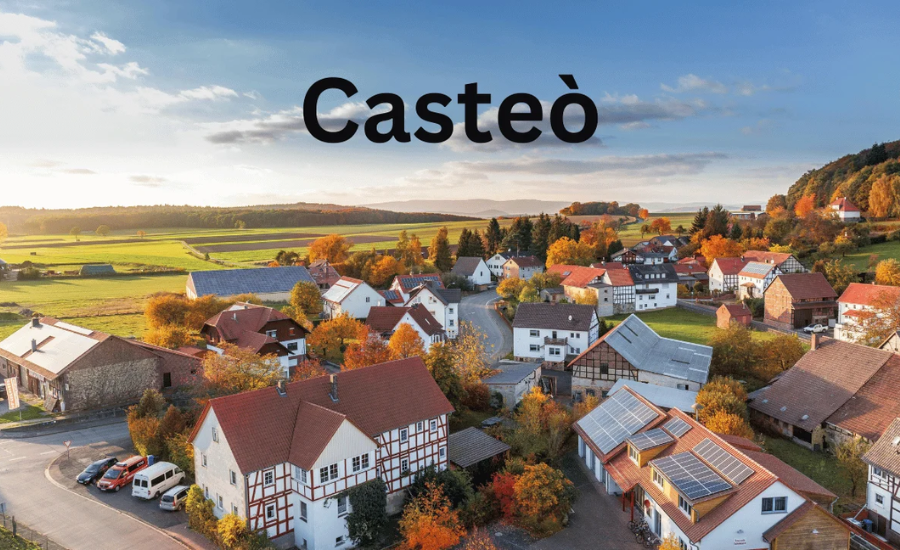The term “casteò” carries multiple interpretations across different cultures and fields, adding to its complexity and intrigue. From its role as a traditional Italian digestif to its symbolic significance in Indian society, casteò represents diverse aspects of heritage, identity, and even controversy. This guide offers a deep dive into the concept of casteò, unpacking its origins, cultural importance, modern applications, and the discussions surrounding it.
What Is Casteò?
At its core, casteò has distinct meanings that vary based on regional and cultural contexts. In Italian culinary tradition, casteò refers to a type of bitter liqueur made from a blend of herbs and botanicals, often enjoyed after a meal to aid digestion. Alternatively, in Indian society, casteò is a centuries-old social system rooted in hierarchical groupings, each with defined roles and duties that have influenced societal norms and personal identities.
Casteò As An Italian Digestif

In Italy, casteò is synonymous with “amaro,” a drink crafted from herbal and spice infusions, including gentian root, wormwood, chamomile, and citrus peels. Known for its bitter yet aromatic profile, it’s commonly sipped after meals to promote digestion. Popular brands like Averna and Montenegro have introduced this beverage worldwide, making it a staple in Italian-inspired cocktails. Typically served neat or on ice, casteò as an Italian digestif brings a taste of cultural heritage, capturing the essence of Italy’s rich culinary traditions.
Casteò in Indian Society: A Symbol of Social Structure
The term “casteò” in India, while different from the Italian drink, represents a longstanding social structure that categorizes people into hierarchical groups based on ancestry, occupation, and social roles. This caste system includes four primary groups—Brahmins, Kshatriyas, Vaishyas, and Shudras—alongside the Dalits, or “untouchables,” who historically faced severe discrimination. Although Indian society has undergone significant reforms, caste divisions continue to influence both social dynamics and personal identities.
Historical Roots Of Casteò In Italy and India
The origins of casteò are rooted in both Italian and Indian traditions, each with unique histories that shape their present-day interpretations.
Italy’s Historical Take: From Vinum Passum to Modern Casteò
In Italy, the history of casteò dates back to the 1300s as a wine made from partially dried Corvina grapes, known then as vinum passum or “raisin wine.” This method of air-drying grapes produced a sweet, dessert wine prized for its rich flavors and aromas. Modern casteò wines from the Valpolicella region continue this tradition, presenting a complex taste profile of dried fruits, spices, and chocolate—a delightful conclusion to any Italian meal.
The Evolution of the Casteò System in India
In India, casteò has deep roots in historical texts and social norms, originally designed to structure communities and occupations. Over time, the system became more rigid, leading to distinct social classes that dictated various aspects of life, from marriage to profession. Though there has been progress in reducing discrimination, the legacy of casteò still influences India’s cultural and political landscape.
Casteò’s Role in Modern Society

In both Italian and Indian contexts, casteò has adapted to modern influences while retaining its traditional elements.
Casteò as a Modern Italian Beverage Trend
The Italian digestif has gained global popularity, with variations now found in cocktails like the Negroni or Americano, blending well with other ingredients to create unique flavors. The beverage has expanded beyond Italy, with people worldwide appreciating it as a sophisticated addition to their culinary repertoire. Casteò liqueurs continue to be celebrated for their digestive benefits and cultural appeal, symbolizing Italian elegance and tradition.
The Transformation of Casteò in Indian Culture
In India, casteò is evolving toward a more inclusive system, especially in urban areas where inter-caste marriages and diverse professional roles are increasingly accepted. The younger generation is challenging the traditional norms, viewing caste as less relevant in defining identity and social status. Meanwhile, affirmative action policies promote educational and economic opportunities for historically marginalized groups, sparking debates on the necessity and impact of caste-based reservations.
Debates And Controversies Surrounding Casteò
Despite its positive aspects, casteò has sparked debates and controversies that reflect societal shifts and ethical considerations.
In Italy: Modern Health Concerns and Preferences
While Italian casteò is widely enjoyed, some consumers question its bitter taste and potential health implications. Though generally safe, certain botanicals in the drink may cause adverse reactions in some individuals, raising questions about appropriate consumption guidelines. Additionally, the cost of authentic casteò liqueurs can limit accessibility, sparking discussions on how to make this traditional beverage available to a wider audience.
In India: Social Inequality and Ethical Considerations
In India, casteò remains a contentious issue due to its links to social inequality and discrimination. Although there have been improvements, caste discrimination persists in some regions, affecting access to education, employment, and even personal relationships. Debates surrounding affirmative action policies add another layer, as critics argue that such measures reinforce caste distinctions rather than eliminate them. Activists and policymakers continue to advocate for reforms to address these challenges and promote equality.
The Future Of Casteò In A Changing World

The future of casteò depends on how societies embrace or transform these traditions to reflect contemporary values.
Italy’s Casteò and Global Expansion
Italian casteò is likely to grow in popularity as people explore diverse beverage options. Craft and artisanal brands are reimagining the drink with new flavors and ingredients, appealing to modern tastes. With a balanced emphasis on tradition and innovation, the Italian casteò market is poised to reach new audiences worldwide.
India’s Caste System: Toward a More Inclusive Society
In India, casteò continues to shape social identity, but there is a growing push for equality and social mobility. Educational initiatives, progressive legislation, and inter-caste cooperation are fostering a more inclusive environment. As modern values redefine traditional structures, India moves toward a future where caste distinctions may hold less sway, focusing instead on individual achievement and equal opportunity.
Conclusion: Understanding the Multidimensional World of Casteò
The term “casteò” encapsulates more than just a beverage or a social structure; it represents the values, histories, and transformations of different societies. For those exploring Italian culture, casteò offers a taste of tradition and complexity, while in India, understanding casteò is essential for grasping the social dynamics that influence millions of lives.
In a world that is rapidly evolving, the meaning of casteò continues to shift, inspiring new conversations about heritage, identity, and equality. As we learn and adapt, casteò may either evolve with modern ideals or remain a cherished emblem of tradition. Either way, knowledge of casteò allows us to appreciate the richness of cultural heritage and the ongoing journey toward a more inclusive world.
Continue following up on this: Tribune Breaking
